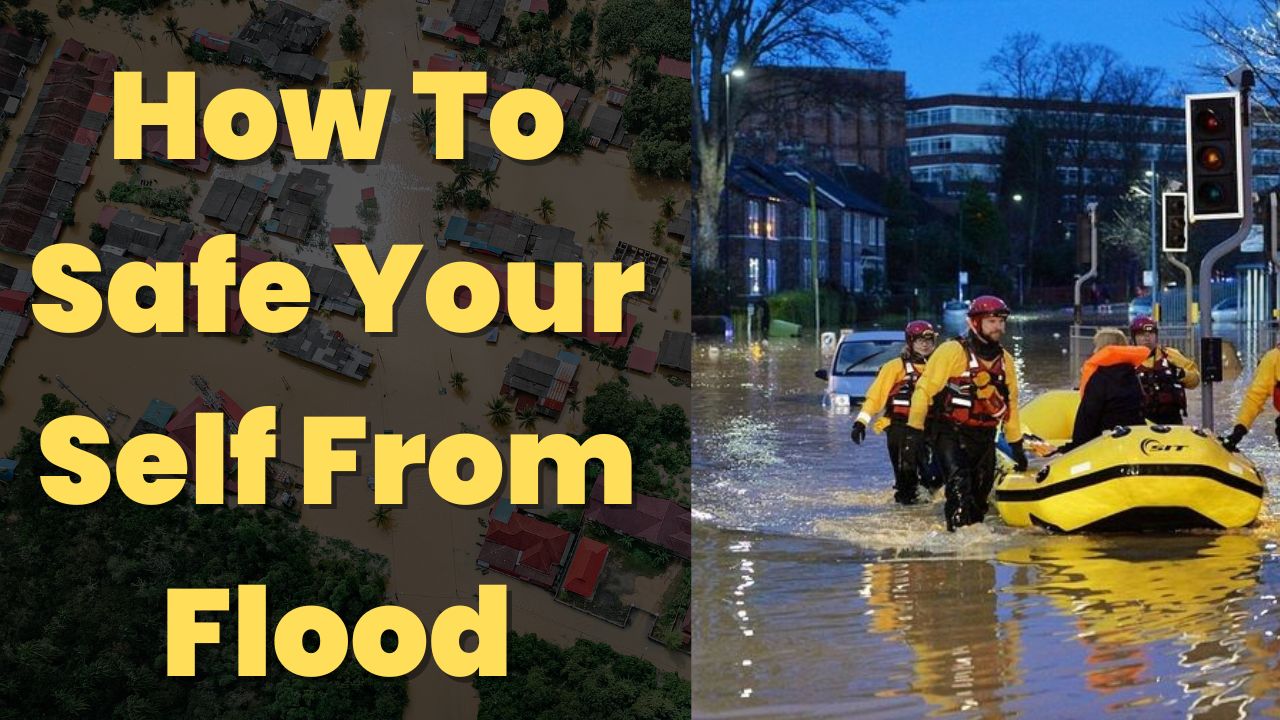Flood Alerts: A Comprehensive Guide To Safety And Preparedness

Table of Contents
Understanding Flood Alerts and Warning Systems
Effective flood preparedness begins with understanding the different types of alerts and how they are disseminated. Knowing the difference between a watch and a warning is paramount. A flood watch means flooding is possible. Conditions are favorable for flooding, so you should monitor conditions closely and be prepared to act. A flood warning, on the other hand, means flooding is occurring or is imminent. You should take immediate action to protect yourself and your property. Flood advisories indicate less severe flooding is occurring or is expected.
Various methods are used to disseminate flood alerts. These include:
-
Weather Apps: Most weather apps provide real-time alerts, including flood warnings and watches for your specific location. Download a reliable weather app and ensure location services are enabled.
-
National Oceanic and Atmospheric Administration (NOAA): NOAA's National Weather Service is a primary source of flood alerts and forecasts. Their website and social media channels provide up-to-date information.
-
Local News: Local news channels and websites are crucial for hyperlocal flood alerts and updates specific to your community.
-
Emergency Alert System (EAS): Be aware of your local EAS broadcasts via television and radio.
-
Sirens: Many communities utilize outdoor warning sirens to alert residents of imminent danger, including floods. Familiarize yourself with the sound of the sirens in your area.
-
Learn the difference between a flood watch and a flood warning. A watch means it's possible, a warning means it's happening or imminent.
-
Sign up for emergency alerts via text, email, or app notifications from your local authorities and the National Weather Service.
-
Know the local warning systems in your area. This includes siren sounds, alert methods used by local authorities, and common communication channels.
-
Understand the meaning of different alert levels. Pay attention to the severity level indicated in the alert to gauge the potential impact.
Preparing for a Flood: Pre-Flood Checklist
Proactive preparation is key to minimizing the impact of a flood. Developing a comprehensive plan and assembling an emergency kit are essential steps.
Family Emergency Plan:
- Establish primary and secondary evacuation routes.
- Designate a meeting place outside your flood-prone area.
- Practice your evacuation plan regularly, especially with children.
- Identify a safe location to stay during and after the flood.
Emergency Kit:
- Store at least a three-day supply of non-perishable food and water.
- Include a first-aid kit, medications, and any necessary personal items.
- Pack important documents (identification, insurance policies, financial records) in waterproof containers.
- Keep extra batteries and a hand-crank or solar-powered radio.
Protecting Your Property:
- Identify potential flood risks in your home or neighborhood. Are you in a flood plain? Are there drainage issues nearby?
- Elevate electrical appliances and valuable items to prevent damage.
- Consider purchasing flood insurance, as it is often not covered by standard homeowner's insurance.
- Prepare your car for potential evacuation by filling the gas tank and ensuring it's in good working order.
Staying Safe During a Flood: Evacuation and Emergency Procedures
During a flood warning, your safety is paramount. Immediate action is crucial.
Evacuation Procedures:
- Evacuate immediately when instructed by authorities. Do not delay.
- Follow designated evacuation routes.
- Bring your emergency kit and essential documents.
- Secure your home as best as you can before leaving.
Emergency Procedures During a Flood:
-
Never attempt to drive through floodwaters. Even shallow water can be deceptively dangerous. "Turn around, don't drown."
-
Seek higher ground immediately.
-
Avoid downed power lines and damaged structures.
-
Stay informed about changing conditions through reliable sources.
-
If evacuation isn’t possible, seek shelter in a sturdy building on higher ground.
-
Never attempt to drive through floodwaters. The depth can be deceiving, and the current incredibly strong.
-
Turn around, don't drown. This is the most important rule during a flood.
-
Stay informed about changing conditions. Floodwaters can rise rapidly.
-
Seek shelter in a sturdy building if evacuation isn’t possible. Stay away from windows and doors.
Post-Flood Recovery and Safety
Returning home after a flood requires caution and careful assessment.
Returning Home Safely:
- Beware of downed power lines, structural damage, and unstable ground.
- Contact your local authorities to check on the safety of your home and neighborhood.
- Use extreme caution when entering your home.
Assessing Damage and Contacting Insurance:
- Thoroughly assess the damage to your property.
- Document the damage with photos and videos.
- Contact your insurance company to report the damage and begin the claims process.
Cleaning and Sanitizing Flood-Damaged Property:
-
Cleaning up after a flood can expose you to dangerous pathogens.
-
Use protective gear, including gloves, masks, and boots.
-
Dispose of contaminated materials properly.
-
Seek professional help for cleaning and repairs.
-
Beware of downed power lines and structural damage. These pose serious risks.
-
Use caution when entering your home after a flood. Check for structural integrity and potential hazards.
-
Report damage to authorities. This helps with community recovery efforts.
-
Dispose of contaminated materials properly. This prevents the spread of disease.
-
Seek professional help for cleaning and repairs. Flood damage can be extensive and complex.
Conclusion
Flooding is a serious threat, but preparedness can significantly reduce its impact. By understanding flood alerts, creating a comprehensive plan, and taking appropriate safety measures, you can protect yourself and your family. Staying informed through various channels and proactively preparing for potential floods will help you navigate this challenging situation effectively. Remember to regularly review your flood preparedness plan and stay updated on current flood alerts in your area. Take control of your safety and create a robust flood preparedness strategy today! Don't wait for a flood warning; prepare for flood alerts now and safeguard your future.

Featured Posts
-
 Ikuti Balapan Moto Gp Inggris Jadwal Dan Informasi Penting
May 26, 2025
Ikuti Balapan Moto Gp Inggris Jadwal Dan Informasi Penting
May 26, 2025 -
 Chinese Tennis Players Successful Italian Open Run
May 26, 2025
Chinese Tennis Players Successful Italian Open Run
May 26, 2025 -
 Tadej Pogacars Strong Challenge Van Der Poels Second Tour Of Flanders Win
May 26, 2025
Tadej Pogacars Strong Challenge Van Der Poels Second Tour Of Flanders Win
May 26, 2025 -
 Controverse Du Grand Cactus Le Csa Statue Sur Le Sketch A Caractere Sexuel
May 26, 2025
Controverse Du Grand Cactus Le Csa Statue Sur Le Sketch A Caractere Sexuel
May 26, 2025 -
 I Mercedes Kai I Pithani Metagrafi Toy Ferstapen I Alitheia
May 26, 2025
I Mercedes Kai I Pithani Metagrafi Toy Ferstapen I Alitheia
May 26, 2025
